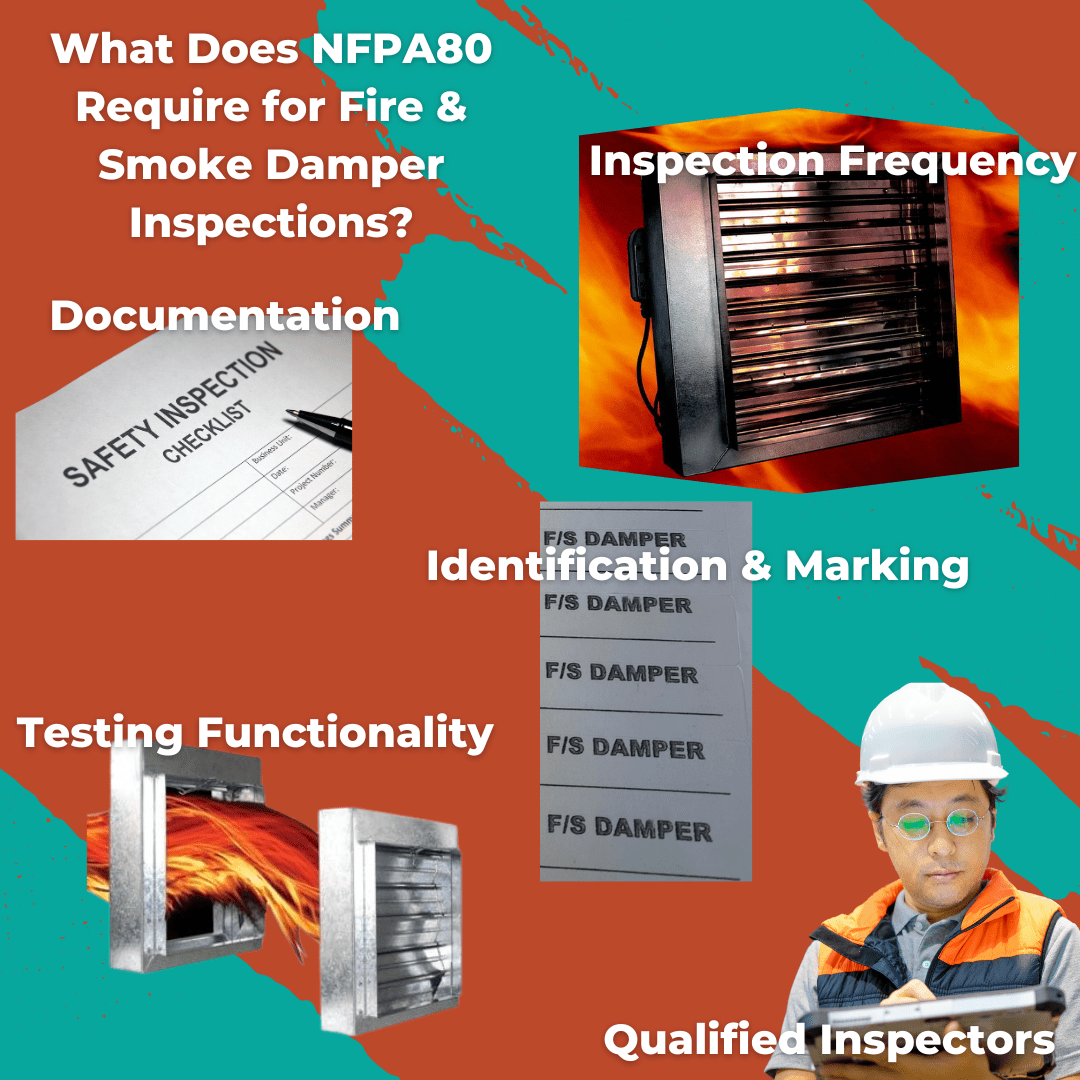Breaking Down NFPA80: Fire & Smoke Damper Inspections

Subscribe to our Blog
The National Fire Protection Association (NFPA) and the International Building and Fire Codes require regular maintenance of fire and smoke dampers. Authorities Having Jurisdiction (AHJ’s) such as the Joint Commission, fire marshals and insurance risk auditors enforce these requirements. In recent years, multiple municipalities have passed legislation that details the requirements of what it means to be a “Qualified Individual” to do fire and smoke damper inspections, with more areas looking to pass similar requirements. But for us to understand what the prerequisites are to become an ANAB Certified Damper Inspector, we first need to understand the specifications of NFPA80 in regards to Fire and Smoke Damper Inspections.
From NFPA:
“[In 2007], the requirements for the installation, inspection, testing, and maintenance of fire dampers were moved from NFPA 90A to NFPA 80. One of the questions [we] get asked most often is with regards to the inspection and test frequency of fire dampers. Like all opening protectives, continued maintenance and inspection is critical and will help ensure that the doors, windows, shutters, dampers, etc. will operate properly under fire conditions.”


Inspection Frequency:
NFPA 80 usually specifies the frequency at which fire and smoke dampers should be inspected. The frequency may be based on factors such as the type of occupancy, environmental conditions, and the age of the facility.
Qualified Individuals:
The standard typically requires that inspections and testing be conducted by qualified individuals who are knowledgeable about fire protection systems and the specific requirements outlined in NFPA 80.
Functional Testing:
NFPA 80 generally mandates functional testing of fire and smoke dampers. This involves verifying that the dampers operate as intended during an emergency, allowing them to close and effectively prevent the spread of fire and smoke.
Documentation:
Building owners and facility managers are usually required to maintain accurate records of inspections and testing activities. This documentation serves as proof of compliance and is essential focr audit purposes.
Identification and Marking:
NFPA 80 typically includes requirements for the proper identification and marking of fire and smoke dampers. This ensures that these components are easily recognizable for inspection purposes.





